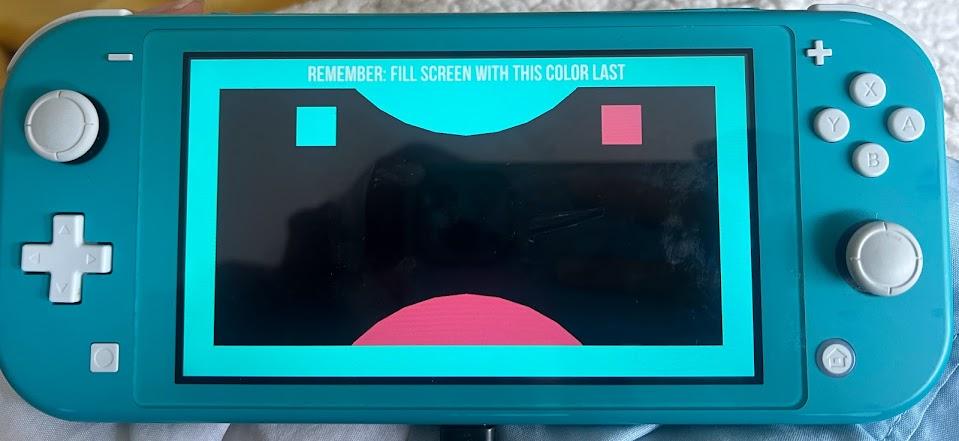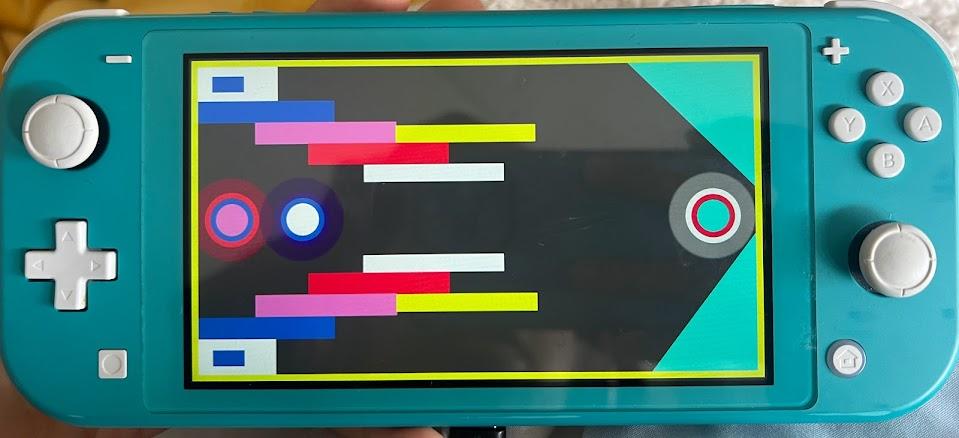For this critical play, I played Color Zen, a puzzle game made by Large Animal Games and Cypronia for any player who wants to relax with simple, aesthetic puzzles. It was released in 2013 and is available on Nintendo Switch, browser, PlayStation 4, iOS, Wii U, and Nintendo 3DS.




In Color Zen, the goal is ultimately to match colors. To do so, players can collide two geometric shapes of the same color (which changes the background color) until the last objects that they collide match the color outlining the screen. In the first few levels, this task is simple, allowing the player to drag, either by joystick or touchscreen, the shapes in the correct sequence easily. As levels progress, the difficulty increases as well; however, the artistry evolves alongside it as puzzles become more elaborate with changes like nested colors. An example level is shown on the right. Ultimately, the color-matching mechanics are central to the experience of the game and help players stay engaged, strategically plan to solve puzzles, and feel a sense of continuous progression.

One major way that Color Zen’s mechanics help users stay engaged is its consideration of the visual mechanics of the game. One point that was emphasized when I got this game was that Color Zen was intended to be calming. There are no time constraints or scores involved in the game, and you can restart or replay levels as many times as you want. The levels are designed around symmetry and use high-contrast colors to differentiate objects, and the visuals begin simple to help players acclimate to the mechanics. In addition, a sound plays on every successful match and level win; this helps players feel rewarded when they win, encouraging them to stay engaged and continue to play.

Despite the goal of being a calming game, players may make mistakes when solving the puzzles in Color Zen. I certainly made a few mistakes that got me stuck or sat confused for a bit, even on this short playthrough. While the game does not punish these mistakes, the possibility of failure invites player strategy. I had to plan a few moves ahead once levels got more complex to make sure I could succeed, which kept me engaged and positively influenced my experience.
To foster a sense of continuous progression, Color Zen breaks levels into groups of chapters, with each chapter introducing a mechanic and each level in a chapter improving the player’s experience with that new mechanic. For example, when I got to Chapter 2 the game introduced a white geometric shape that would take on the color of the object it collided with, instead of needing to collide with another white. This mechanic ensures that as long as there are more levels to play, there are more skills for a player to learn and master, which keeps gameplay engaging.

While some puzzle games are driven by speed and pressure, like Tetris, and some are more interested in levels and scores, like Candy Crush, Color Zen is unique in its offering of a calming puzzle experience. In addition, there is not always one right way to solve the game’s puzzles. People may use similar strategies, but two people likely would not solve every puzzle in the same order. The game combines loops and arcs to reach the goal of tranquility, creating arcs of learning and mastering new mechanics and loops of using those interactions to solve puzzles. These are almost exclusively mechanics loops and arcs since there is not a narrative in this game.

If I were to suggest an improvement, though, I would recommend making difficult puzzles more artistic. I was very excited as a player to see beautiful images made from only geometric shapes as I progressed further, but I found the art in Chapter 1 to be the best of what I played through for the critical play. I did not complete Chapter 3 or beyond, though, so that may have an effect.
Overall, Color Zen’s mechanics influence the gaming experience by promoting a state of meditative engagement, requiring strategic thinking, and ensuring continuous progression. By embracing its core mechanics and continuously refining its gameplay, Color Zen exemplifies how thoughtful design can elevate a simple concept into a compelling and serene gaming journey.



